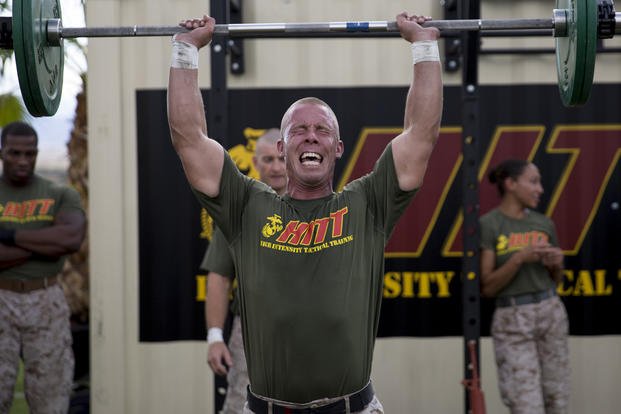Throughout the years, this Military.com Fitness Channel has been focused on teaching skills, passing tips and hopefully motivating some of you to be more physically active, especially if you are in the tactical professions (military, police, fire/EMT). But do you know why we should consider tactical fitness -- not just during our service time, but after?
Tactical fitness is the ability to perform survival-related skills, such as running, rucking, swimming, buddy rescue, climbing, jumping and equipment carry, which require full-body strength, muscle coordination, stamina, speed, agility and cardiovascular conditioning. But the ability to recover from the physical, mental and emotional stress requires a delicate balance of recovery-related skills: recovery, sleep, nutrition, flexibility and mobility.

ABOVE: The Tactical Fitness Venn Diagram describes how durability is tied to strength, power and speed/agility. Work capacity is a product of your aerobic/anaerobic conditioning and overall stamina. Stability is how you move, think and move, and how determined you are to get a job done (mindset). Stress mitigation is the ultimate goal, developed by actively pursuing recovery. Sleep, nutrition, mobility, flexibility, meditation and other (physically and mentally) relaxing activities can be used together to further develop the tactical athlete into a more resilient person.
Tactical fitness is not just working out every few months to pass a fitness test. It is designed to help the operator better perform their job so they do not put themselves, their partner or people they are trying to save in greater danger.
Tactical Fitness coordinates all of the elements of fitness. However, recovery, sleep, nutrition, stress management and resiliency are even more important to the tactical professional.
If you make the tactical professions a career, you will be older longer than you are younger. Understanding what you do today will affect your longevity directly, and your ability to grow successfully in your job is due to your knowledge of tactical fitness.
America's military and first responders have a higher rate of cancers, stress-related injury and illnesses, cardiac events, career-ending/delaying physical injuries and, worse, mental-health issues -- many resulting in suicide. Eating healthier to help you metabolize stress and exercising for better overall mental and physical health should be the goal of tactical fitness.
Tactical fitness is not just a cool word you put in front of fitness to make a new fitness trend. It is literally life or death for the tactical professions.
Maintaining strong bodies as we age is just one goal of tactical fitness. Keeping the mind strong and resilient to handle the stresses of life in the tactical world may seem like an underlying result one receives from engaging in a fitness program, but it actually requires work and an understanding of the physiology of stress. See de-stress-related articles, such as Stress: The Perfect Storm.
Learning how to deal with daily stress will help you learn to master mental stress and avoid it from becoming chronic. Just minutes a day of focused time on yourself and your well-being can be all you need to help you prevent a major setback mentally, physically and emotionally. That is tactical fitness.
For the people who have endured Phase 1: To the Training and Phase 2: Through the Training to get to Phase 3: Change things up significantly because the mission has changed. No longer are you preparing for a grueling selection, boot camp or academy class.
Now you are focused on longevity and spreading out your training so that you include all elements of fitness, rest, nutrition, sleep, mobility and recovery.
These components will build a stronger mind and body, with abilities to perform the job like you were trained to do for a longer period of time. Maybe you will build the type of longevity to sustain a 20-year career. In the end, the goal is to retire unbroken, so you can enjoy the second half of your life.
That is tactical fitness and why it is so important to be well-rounded in your training and recovery.
Related links in tactical fitness:
Three Phases of Tactical Fitness
Tactical Fitness Rules of Training
Tactical Strength: The Foundation of the Tactical Athlete
Stew Smith is a former Navy SEAL and fitness author certified as a Strength and Conditioning Specialist (CSCS) with the National Strength and Conditioning Association. Visit his Fitness eBook store if you’re looking to start a workout program to create a healthy lifestyle. Send your fitness questions to stew@stewsmith.com.
Want to Learn More About Military Life?
Whether you're thinking of joining the military, looking for fitness and basic training tips, or keeping up with military life and benefits, Military.com has you covered. Subscribe to Military.com to have military news, updates and resources delivered directly to your inbox.















